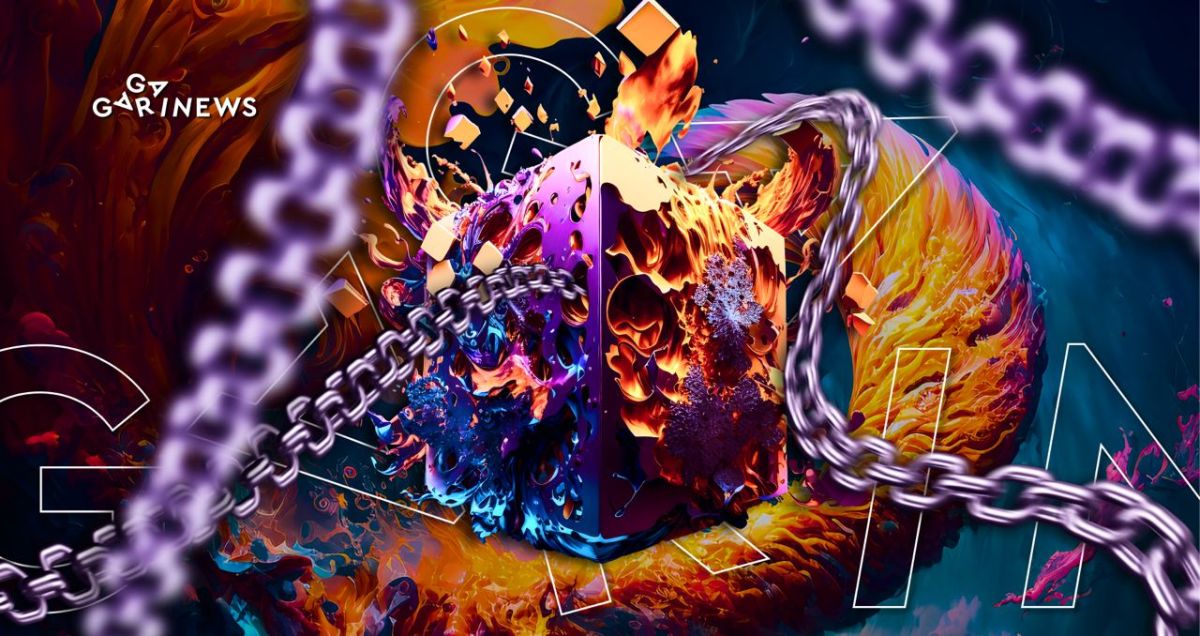What Are Layer 0 and Layer 3 in Blockchain?

The web is brimming with content about Layer 1 and Layer 2 in the blockchain field. At our Gagarin News portal, we also frequently touch upon these topics. However, certain layers of the blockchain, such as Layer 0 and Layer 3, don’t get enough spotlight. We’re about to change that.
As is well-known, Layer 2 solutions (like sidechains and the Lightning Network protocol) help address the blockchain trilemma for various Layer 1 blockchains (like Bitcoin, Ethereum, among others). But what roles do Layer 0 and Layer 3 play, and which solutions are considered as Layer 3? Let's delve into these questions.
Layer 0
Layer 0 refers to a protocol type or a software environment that enables the creation and deployment of Layer 1 blockchains. These can have varied missions, formats, and consensus algorithms. However, due to its limited format, Layer 1 will always encounter the blockchain trilemma, unlike Layer 0. This trilemma can be solved with the aid of Layer 2 solutions.
Layer 0 provides a multitude of tools and solutions for interactions between Layer 1 blockchains, like cross-chain transfers and asset exchanges. Consequently, end-users gain the ability to manipulate assets from different networks and classes as if they were using a unified ecosystem, not distinct ones.
L0 networks offer a Software Development Kit (SDK) for creating new, independent L1 blockchains, which, while functioning independently, remain connected to the main L0 blockchain.
In layman's terms, Layer 0 is a platform equipped with all the necessities to create and launch new blockchains from the ground up. These blockchains harbor the potential to reach the stature of Bitcoin or Ethereum. Why not, indeed?
Layer 0 services empower developers to craft cross-chain applications that will function across various blockchains. They also simplify the processes of integration, blockchain interaction, and asset exchange between different blockchains. This is accomplished through unification and standardization, considerably easing the development process for multiple blockchains at once.
L0 platforms also deliver quick and cost-effective transactions via cross-chain exchanges, employing specialized ‘communication' protocols.
The Layer 0 category encompasses heterogeneous blockchains and new generation networks that have introduced platforms and tools for building autonomous L1 networks.
Examples of Layer 0 include Cosmos, Polkadot, Avalanche, Horizen, and more.
Each L0 solution boasts its unique architecture, concept, and execution, and also offers a ‘builder' for creating new blockchains following a conveyor-belt principle.
Layer 3
Layer 3 is also referred to as the application or DApp (Decentralized Application) layer. This is the tier of the blockchain where decentralized applications are located, including Decentralized Exchanges (DEXs), Metaverse projects, Decentralized Autonomous Organizations (DAOs), and the protocols that support them.
Not all blockchains maintain a Layer 3. For example, Ethereum, Solana, EOS, Tron, BNB Chain, Polygon, and other similar blockchains offer support and actively develop their Layer 3 ecosystem. Conversely, Bitcoin, the oldest network, does not have this level of support.
Some projects aim to incorporate the capabilities of DApps into the Bitcoin ecosystem through forks. One such example is CakeDeFi, a DeFi service that offers staking, lending, and liquidity mining services to Bitcoin holders. CakeDeFi operates on DeFiChain, a fork of Bitcoin. Although DeFiChain retains a connection to the Bitcoin main network for some operations, it is technically a separate blockchain.
According to some experts, the absence of DApps support is one of the most significant shortcomings of the Bitcoin network. Ever since Ethereum's launch in 2015, platforms that support Layer 3 have seen a sharp increase in popularity and value. The number of Layer 3 applications on Ethereum has already surpassed 3,000. Similarly, Solana, another well-known L1 blockchain, hosts over 500 DApps. As of early 2023, data from DappRadar indicates that the total number of Layer 3 decentralized applications had reached 13,000.
Currently, there are ongoing debates about the feasibility of integrating DApps into the Bitcoin network, which would necessitate creating Layer 3 support. Many argue that Bitcoin will always be a transactional blockchain for decentralized digital currency, not for DApps. However, other blockchains have seen a surge in user numbers, asset capitalization, and popularity due to their support for Layer 3. In time, it will become clear which model—supporting Layer 3 or not—is more effective.
Layer 3 examples include Maker DAO, Uniswap, PancakeSwap, Decentraland, and many more.
The content on The Coinomist is for informational purposes only and should not be interpreted as financial advice. While we strive to provide accurate and up-to-date information, we do not guarantee the accuracy, completeness, or reliability of any content. Neither we accept liability for any errors or omissions in the information provided or for any financial losses incurred as a result of relying on this information. Actions based on this content are at your own risk. Always do your own research and consult a professional. See our Terms, Privacy Policy, and Disclaimers for more details.

























